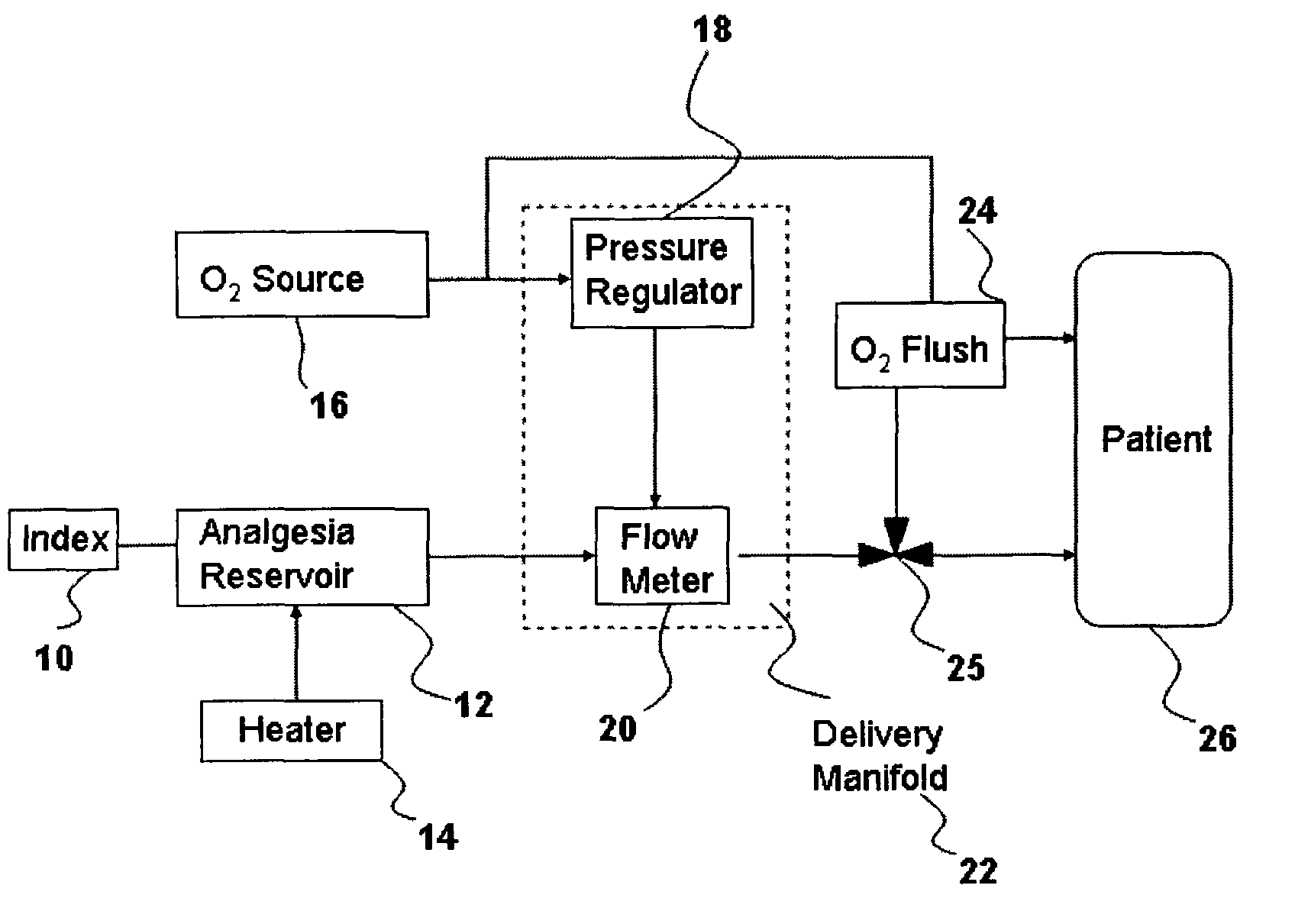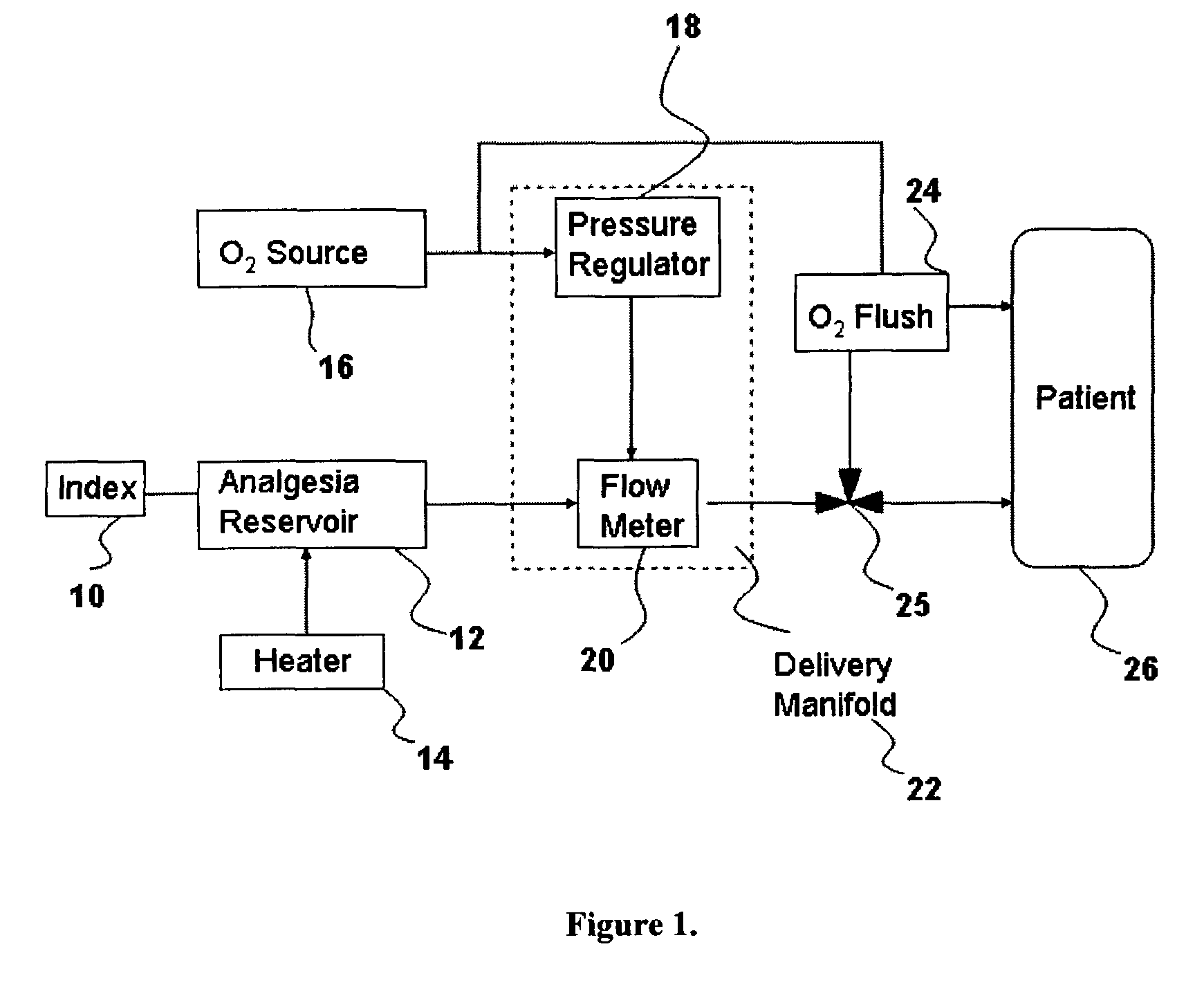Drug delivery system for conscious sedation
a conscious sedation and drug delivery technology, applied in the field of analgesia and conscious sedation, can solve the problems of over $100,000 in equipment development and cost, the decline of conscious sedation use of nitrous oxide, and the inability to safely and effectively deliver the agent, etc., to achieve rapid onset and recovery, safe and effective delivery of the agent, and broad safety profile
- Summary
- Abstract
- Description
- Claims
- Application Information
AI Technical Summary
Benefits of technology
Problems solved by technology
Method used
Image
Examples
example i
[0020]The potency of anesthetic agents is measured by the minimum alveolar concentration of an anesthetic producing immobility in 50% of patients, defined as 39 year old males, undergoing surgical incision (“MAC”). The MAC of potent inhaled agents varies significantly. The MAC of nitrous oxide, the leading inhalant conscious sedation drug, can only be determined under unusual conditions of temperature and pressure, such as a hyper baric chamber, when additional dosages can be provided without creating hypoxia. Research suggests the MAC of nitrous oxide to be 110%. Thus, to create anesthesia, most patients would suffocate. Conversely, the MAC of methoxyflurane, an early-halogenated ether is only 0.16%. In present inhalant conscious sedation systems, nitrous oxide is delivered in conjunction with a minimum of 30% oxygen to insure the patient maintains a sufficient level of oxygen. In the United States, the Food and Drug Administration (“FDA”) has set 70% nitrous oxide as the limit for...
example ii
[0023]To deliver a concentration of the relevant agent that creates analgesia but not loss of awareness (either amnesia or loss of consciousness) requires a finely calibrated instrument through which the agent can flow with very minimal risk of overdose or delivery of hypoxic mixture (FIG. 1.) To be practical in the outpatient setting the device must be cost-effective, preferably costing less than anesthesia machines which presently cost $100,000 or more. Compared to the sedative hypnotics, barbitutes, opoids and agonist / antagonists that can also be used of sedation, the invention offers more rapid onset and recovery and less risk of abuse potential. The invention therefore comprises an oxygen delivery mechanism, either an O2 cylinder(s) and / or manifold system to oxygen storage (“O2 source”) 16 and a reservoir for the analgesia agent 12, for example but not limited to an agent compatible cylinder; a heating element 14 attached to the analgesia reservoir 12, for example but not limit...
PUM
| Property | Measurement | Unit |
|---|---|---|
| concentration | aaaaa | aaaaa |
| temperature | aaaaa | aaaaa |
| pressure | aaaaa | aaaaa |
Abstract
Description
Claims
Application Information
 Login to View More
Login to View More - R&D
- Intellectual Property
- Life Sciences
- Materials
- Tech Scout
- Unparalleled Data Quality
- Higher Quality Content
- 60% Fewer Hallucinations
Browse by: Latest US Patents, China's latest patents, Technical Efficacy Thesaurus, Application Domain, Technology Topic, Popular Technical Reports.
© 2025 PatSnap. All rights reserved.Legal|Privacy policy|Modern Slavery Act Transparency Statement|Sitemap|About US| Contact US: help@patsnap.com



